- What is a Greenhouse?
- Why Grow Cucumbers in a Greenhouse?
- Preparing the Greenhouse
- Choosing the Right Location
- Preparing the Soil
- Sowing Cucumber Seeds
- Choosing the Right Variety
- Preparing the Seed Trays
- Sowing and Watering
- Transplanting Seedlings
- Step 1: Prepare the Greenhouse
- Step 2: Choose the Transplanting Method
- Step 3: Transplant the Seedlings
- Step 4: Provide Care and Maintenance
- “Question-Answer”
- When is the best time to sow cucumber seeds in the greenhouse?
- What type of soil should I use for growing cucumbers in the greenhouse?
- How often should I water the cucumber plants in the greenhouse?
- Do cucumbers in the greenhouse need pollination?
- What should I do if my cucumber plants in the greenhouse are attacked by pests?
- How long does it take for cucumbers to mature in the greenhouse?
- Can I grow cucumbers in containers inside the greenhouse?
- “Video” Secrets of Growing Cucumbers With Many Fruits, From A To Z, Harvest After Only 1 Month
Are you looking to grow your own cucumbers in a greenhouse? Look no further! In this step by step guide, we will walk you through the entire process of growing cucumbers from sowing to harvest. Whether you’re a beginner or an experienced gardener, this guide will provide you with all the essential information you need to successfully grow your own delicious cucumbers.
Step 1: Sowing
Begin by selecting cucumber seeds that are specifically bred for greenhouse growing. These seeds are often labeled as “greenhouse” or “hothouse” cucumbers. Start sowing the seeds indoors in small pots or trays, about 4-6 weeks before the last frost date in your area. Place the seeds about 1 inch deep and keep the soil consistently moist until the seeds germinate. Once the seedlings have grown a few sets of true leaves, they are ready to be transplanted into the greenhouse.
Step 2: Transplanting
When the seedlings are about 4-6 weeks old and the risk of frost has passed, it’s time to transplant them into the greenhouse. Prepare the greenhouse soil by improving drainage and adding organic matter. Dig holes that are wide enough to accommodate the root system of the seedlings. Gently remove each seedling from its pot and place it in the hole, ensuring that the roots are spread out. Fill the hole with soil, firming it gently around the seedling. Water the transplanted seedlings thoroughly.
Step 3: Greenhouse Care
Once the cucumber seedlings are transplanted, it’s important to provide them with the necessary care to promote healthy growth. Maintain a temperature of around 70-75°F (21-24°C) during the day and 60-65°F (15-18°C) at night. Cucumbers thrive in well-drained soil that is kept consistently moist. Water the plants regularly, ensuring the soil doesn’t dry out. Consider using a trellis or tomato cage to support the vines as they grow.
Step 4: Pollination
Cucumbers require pollination to produce fruit. In a greenhouse environment, this is often done manually. Gently shake the main stem of each cucumber plant when the flowers are fully open to release the pollen. Alternatively, you can use a small brush to transfer the pollen from the male flowers to the female flowers. This will ensure successful pollination and fruit set.
Step 5: Harvesting
Cucumbers are typically ready to be harvested within 55-70 days from sowing, depending on the variety. Pick the cucumbers when they are firm and have reached the desired size. Cut them from the vine using a sharp knife or secateurs. Regularly harvest the cucumbers to encourage the plant to produce more fruit. Enjoy your fresh, homegrown cucumbers in salads, sandwiches, or pickles!
By following these steps, you’ll be able to grow your own cucumbers in the greenhouse and enjoy a bountiful harvest. With a little care and attention, you’ll be rewarded with delicious cucumbers that you can savor all season long. Happy growing!
What is a Greenhouse?
A greenhouse is a structure designed to provide an ideal growing environment for plants. It is typically made of transparent materials such as glass or plastic, allowing sunlight to enter and trap heat inside. This creates a warm and controlled environment where plants can thrive.
Greenhouses are used to extend the growing season, protect plants from harsh weather conditions, and cultivate crops that are not suited to the local climate. They provide a sheltered space for plants to grow, protecting them from frost, excessive heat, wind, and pests.
The temperature inside a greenhouse is higher than the outside temperature, as sunlight passes through the transparent walls and heats up the air and surfaces inside. This creates a microclimate that provides optimal conditions for plant growth.
Greenhouses can be used for a variety of purposes, including growing flowers, vegetables, and herbs, as well as starting seedlings for outdoor planting. They can be small hobby structures or large commercial operations.
One of the main advantages of using a greenhouse is the ability to control the growing environment. Temperature, humidity, and ventilation can be adjusted to create the ideal conditions for specific plants. This allows for year-round cultivation and the production of high-quality crops.
In addition to the structural aspects, greenhouses often incorporate other features such as irrigation systems, shading screens, and artificial lighting to further optimize plant growth. These additional elements ensure that plants receive the necessary water, nutrients, and light to thrive.
Overall, greenhouses offer a controlled and protected space for plants to grow, allowing gardeners and farmers to have more control over their crops and increase their yield and quality.
Why Grow Cucumbers in a Greenhouse?
Growing cucumbers in a greenhouse offers several advantages compared to growing them outdoors. Here are some reasons to consider growing cucumbers in a greenhouse:
- Extended growing season: Greenhouses provide a controlled environment where you can start growing cucumbers earlier in the year and continue growing them later in the season. This allows you to enjoy a longer cucumber harvesting period compared to outdoor cultivation.
- Protection from pests and diseases: Greenhouses act as a barrier against common pests like aphids, beetles, and cucumber beetles. They also provide protection from diseases that can affect cucumber plants, such as powdery mildew and downy mildew.
- Optimal growth conditions: In a greenhouse, you have control over important growing conditions such as temperature, humidity, and light. You can create the ideal environment for cucumber plants, ensuring optimal growth and maximizing yield.
- Higher yield: With the ability to control the growing conditions, you can provide cucumbers with the ideal conditions for growth and fruit production. This can result in higher yields compared to outdoor cultivation.
- Protection from extreme weather conditions: Greenhouses offer protection from extreme weather events like heavy rains, strong winds, and hailstorms, which can damage or destroy cucumber plants. This means that you don’t have to worry about weather-related crop losses.
Overall, growing cucumbers in a greenhouse allows you to have more control over the growing conditions, protect your plants from pests and diseases, and extend the growing season. This can result in higher yields and a more successful cucumber harvest.
Preparing the Greenhouse
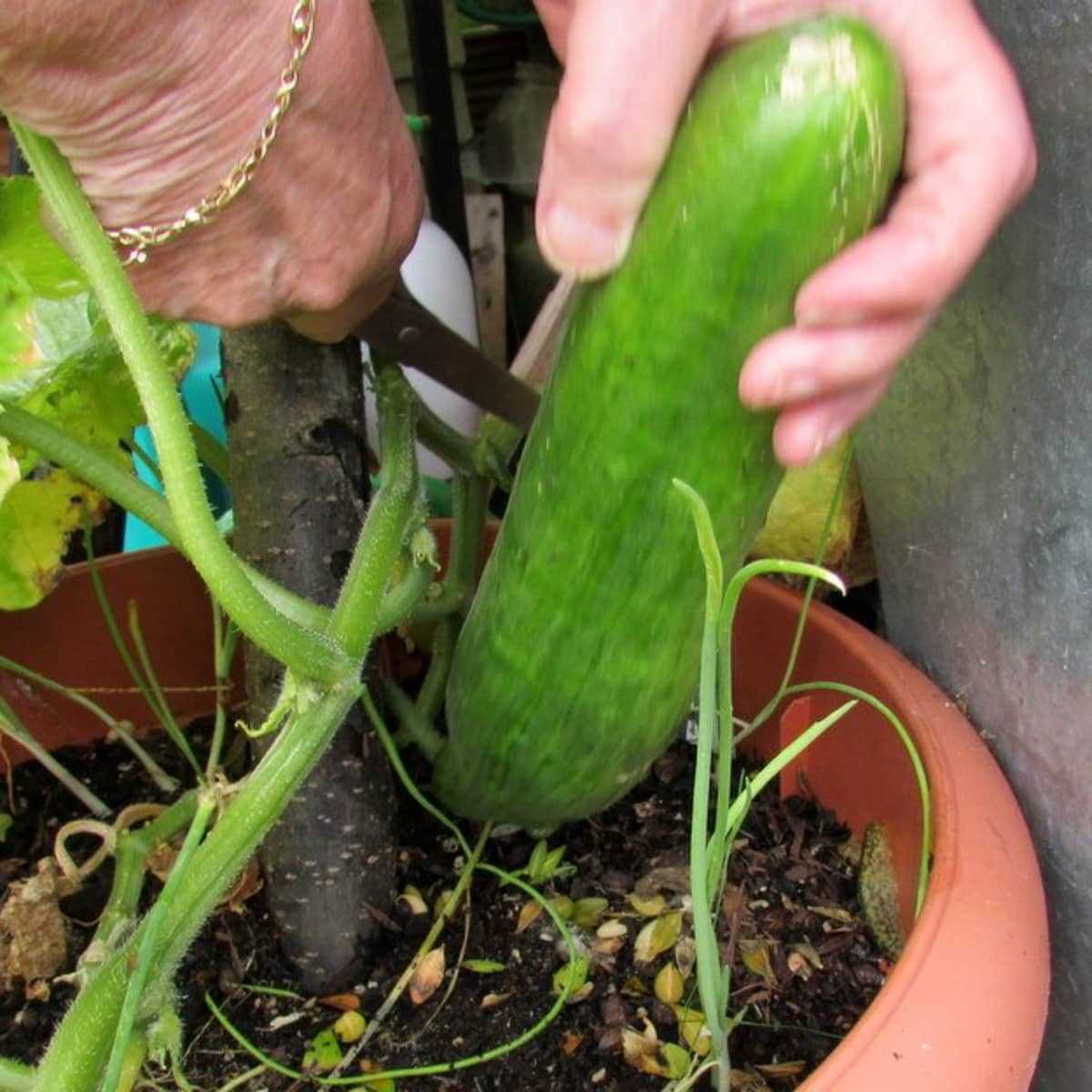
Before you start growing cucumbers in your greenhouse, it’s important to prepare the space to ensure optimal conditions for the plants to thrive. Here are the steps to follow:
- Clean the greenhouse: Start by cleaning the greenhouse thoroughly to remove any debris or old plant material. This will help prevent the spread of diseases and pests.
- Check the structure: Inspect the greenhouse structure for any damage or leaks. Repair or replace any broken or cracked glass or panels to maintain a controlled climate inside the greenhouse.
- Install shading: Cucumbers prefer a slightly shaded environment, especially during the hottest parts of the day. Install shading material or use shade cloth to reduce the intensity of sunlight if needed.
- Provide ventilation: Good ventilation is essential for cucumbers to prevent diseases and maintain optimal air circulation. Install vents or fans to ensure proper air flow inside the greenhouse.
- Set up irrigation: Cucumbers need consistent moisture to grow well. Set up an irrigation system that delivers water directly to the base of the plants, ensuring they receive adequate water without getting their leaves wet.
- Prepare the soil: Cucumbers thrive in well-draining soil rich in organic matter. Test the soil pH and adjust it if necessary. Add compost or organic fertilizer to improve soil fertility.
- Organize the planting area: Arrange the planting area in rows or beds, leaving enough space between plants for air circulation and for the cucumbers to spread out as they grow. Consider using trellises or stakes to support the cucumbers and maximize space.
By properly preparing your greenhouse, you can create an ideal environment for growing healthy and productive cucumber plants.
Choosing the Right Location
When it comes to growing cucumbers in a greenhouse, choosing the right location is crucial for their success. Here are some factors to consider when selecting the ideal spot for your cucumber plants:
- Sunlight: Cucumbers thrive in full sunlight, so choose a location that receives at least 6-8 hours of direct sunlight each day. Position your greenhouse where it is not shaded by trees or buildings.
- Temperature: Cucumbers prefer warm temperatures, so select a location that is warm and well-ventilated. Greenhouses with proper ventilation and temperature control systems are ideal for growing cucumbers.
- Protection: Make sure the chosen location offers protection from strong winds, which can damage cucumber plants. Surrounding your greenhouse with windbreaks or placing it in a sheltered area will help protect the plants.
- Accessibility: Consider the accessibility of the chosen location. You’ll need to regularly tend to your cucumber plants for watering, fertilizing, pruning, and harvesting, so ensure the location is easily accessible for these tasks.
- Soil and Drainage: Check the soil quality and drainage in the selected location. Cucumbers prefer well-draining soil with a pH level between 6 and 7. If the soil is heavy or clayey, consider improving it with organic matter or creating raised beds.
- Space: Determine the available space in the chosen location. Cucumbers can grow quite large, so make sure there is enough room for the plants to spread out and for you to move around and tend to them.
By carefully considering these factors, you can choose the right location for your cucumber plants in the greenhouse, providing them with the optimal conditions for healthy growth and abundant harvests.
Preparing the Soil
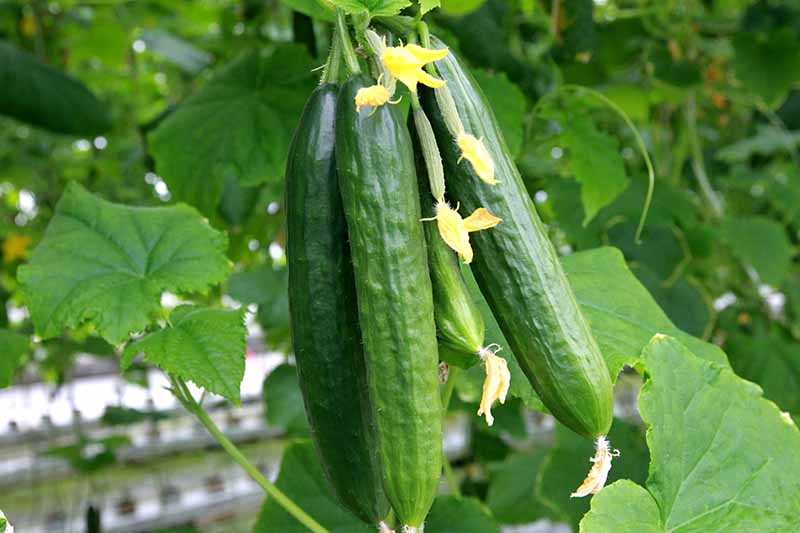
Before you start growing cucumbers in the greenhouse, it is important to prepare the soil properly. The quality of the soil will determine the success of your cucumber plants and the overall yield. Follow these steps to prepare the soil:
- Clear the area: Start by clearing the area where you plan to grow your cucumbers in the greenhouse. Remove any existing plants, weeds, and debris from the soil.
- Test the soil: It is recommended to test the soil before planting cucumbers. A soil test will help you determine the pH level and nutrient content of the soil. Cucumbers prefer a slightly acidic soil with a pH range of 6 to 6.8.
- Improve drainage: Cucumbers thrive in well-drained soil. If your soil has poor drainage, consider adding organic matter such as compost or well-rotted manure to improve it. This will help prevent waterlogging and ensure the roots have access to oxygen.
- Remove large stones and debris: Remove any large stones, rocks, or debris from the soil. Cucumbers have shallow roots, and these obstacles can hinder their growth and development.
- Amend the soil: If the soil test indicates any deficiencies, you can amend the soil by adding necessary nutrients. For example, adding well-balanced fertilizers or specific nutrients like nitrogen, phosphorus, and potassium can help optimize the soil for cucumber growth.
- Till the soil: Use a garden fork or a tiller to loosen the soil and create a fine, crumbly texture. This will make it easier for the cucumber roots to penetrate the soil and establish themselves.
- Level the soil: Once the soil is tilled, use a rake or a garden hoe to level it. This will ensure even water distribution and prevent any water pooling.
By following these steps to prepare the soil, you will create optimal growing conditions for your cucumber plants in the greenhouse. This will promote healthy root development, nutrient uptake, and overall plant growth, resulting in a bountiful harvest of delicious cucumbers.
Sowing Cucumber Seeds
When it comes to sowing cucumber seeds in the greenhouse, there are a few key steps to follow for success. Here is a step-by-step guide to help you get started:
- Selecting the Seeds: Choose high-quality cucumber seeds that are suitable for greenhouse cultivation. Look for disease-resistant varieties and consider the type of cucumber you want to grow (e.g., slicing cucumbers, pickling cucumbers).
- Preparing the Soil: Prepare the soil in your greenhouse by removing any weeds and loosening the soil. Cucumbers prefer well-drained soil that is rich in organic matter.
- Sowing the Seeds: Create furrows in the soil that are about 1 inch deep. Place the cucumber seeds in the furrows, spacing them at least 6 inches apart. Cover the seeds with soil and gently pat it down.
- Watering: After sowing the seeds, water the soil thoroughly to ensure good moisture contact. Avoid overwatering, as it can lead to fungal diseases. Keep the soil consistently moist but not waterlogged.
- Temperature and Light: Cucumber seeds require warm temperatures to germinate, typically between 75-85°F (24-29°C). Place the trays or pots in a warm location, such as near a heat mat or in a heated greenhouse. Provide ample light to the seedlings, either through natural sunlight or artificial grow lights.
- Transplanting: Once the seedlings have developed two to three true leaves and the danger of frost has passed, they are ready to be transplanted into larger containers or directly into the greenhouse soil. Handle the seedlings gently to avoid damaging their delicate roots.
Important Note: It’s essential to monitor the moisture levels of the soil throughout the entire growing process. Cucumbers require consistent moisture, especially during flowering and fruiting stages.
By following these steps and providing the appropriate care, you’ll be on your way to successfully sowing cucumber seeds in your greenhouse and enjoying a bountiful cucumber harvest.
Choosing the Right Variety
When it comes to growing cucumbers in a greenhouse, selecting the right variety is crucial. Different cucumber varieties have different characteristics and requirements, so it’s essential to choose one that suits your specific needs and growing conditions.
Factors to consider when choosing a cucumber variety:
- Growth Habit: Cucumber varieties can be classified into two main types: vining and bush. Vining cucumbers grow long vines and need trellising or support to grow upwards. On the other hand, bush cucumbers are compact and don’t require trellising. Consider the available space in your greenhouse and your preferred method of cultivation when choosing a variety.
- Days to Maturity: Different cucumber varieties have varying maturation times, ranging from 50 to 85 days. If you have a shorter growing season or need cucumbers at a specific time, choose a variety with a shorter maturation period.
- Tolerance to Diseases and Pests: Some cucumber varieties have better resistance to common diseases and pests, such as powdery mildew or cucumber beetles. Choosing a variety with good disease resistance can help you avoid potential problems and reduce the need for chemical interventions.
- Taste and Texture: Cucumber varieties can vary in taste, texture, and color. Consider your personal preference or market demand when selecting a variety.
Popular cucumber varieties for greenhouse cultivation:
| Variety | Characteristics |
|---|---|
| English cucumbers | Long, slender fruits with mild flavor and crisp texture. They typically require trellising. |
| Miniature cucumbers | Small-sized cucumbers that are often harvested when young. They are perfect for snacking or pickling. |
| Pickling cucumbers | Short and firm cucumbers that are ideal for pickling. They have a slightly stronger flavor. |
| Asian cucumbers | Various types of cucumbers commonly used in Asian cuisine. They can be long and ribbed or small and rounded. |
Consult with local gardening experts or seed catalogs to find cucumber varieties that are well-suited for your specific growing conditions and preferences. Remember to consider factors such as growth habit, days to maturity, disease resistance, and taste when making your selection.
Preparing the Seed Trays
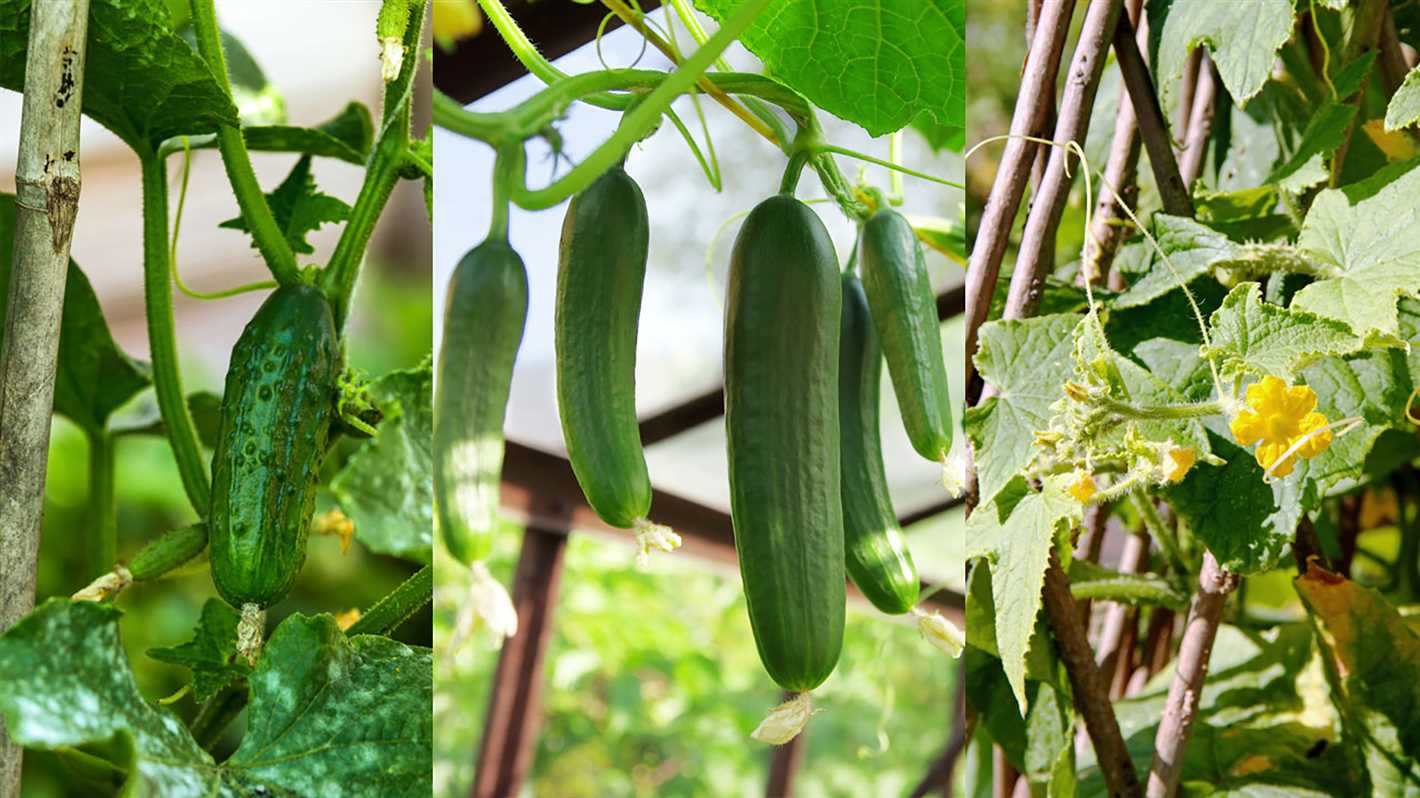
Before sowing cucumber seeds in the greenhouse, it is important to prepare the seed trays properly. This will provide the seeds with the best possible conditions for germination and growth.
Here are the steps to prepare the seed trays:
- Cleaning the trays: Start by cleaning the seed trays with soap and water to remove any dirt or residue. Rinse them thoroughly and allow them to dry completely.
- Filling the trays: Fill the seed trays with a good quality seed starting mix. Make sure to leave about a quarter inch of space at the top to allow for watering.
- Moistening the soil: Before sowing the cucumber seeds, it is important to moisten the soil in the seed trays. Use a spray bottle or a watering can with a fine rose attachment to gently water the soil until it is evenly moist.
- Sowing the seeds: Once the soil is moist, sow the cucumber seeds according to the recommended spacing. You can either sow them directly into the seed trays or pre-germinate them by placing them in a damp paper towel for a few days before sowing.
- Covering the seeds: After sowing the seeds, cover them with a thin layer of vermiculite or seed starting mix. This will help maintain moisture around the seeds and promote germination.
- Labeling the trays: Lastly, label the seed trays with the cucumber variety and the date of sowing. This will help you keep track of the different varieties and their progress as they grow.
Once the seed trays are prepared, place them in a warm and bright location in the greenhouse. Maintain consistent moisture levels by watering the trays as needed. Soon, you will start to see the cucumber seedlings emerge, and you can continue to care for them until it’s time to transplant them into the greenhouse beds.
Sowing and Watering
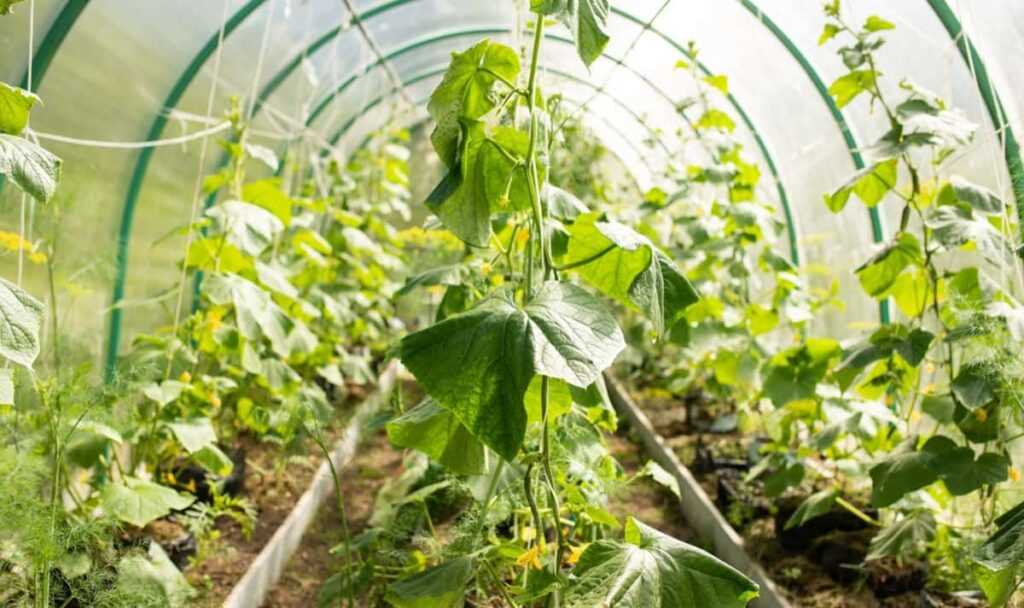
Before sowing your cucumber seeds, it is important to prepare the soil in your greenhouse. Cucumbers thrive in well-drained, fertile soil with a pH level between 6 and 7. Start by loosening the soil with a garden fork or hoe to a depth of about 8-10 inches.
Next, create mounds or raised beds in the greenhouse to improve drainage and ensure proper water distribution. The mounds should be approximately 6-8 inches high and spaced about 2-3 feet apart. This will provide the cucumbers with enough space to grow and spread.
Once the soil is prepared and the mounds are in place, it’s time to sow the cucumber seeds. Plant the seeds about 1 inch deep and space them about 12 inches apart in each mound. Cover the seeds with soil and gently press down to ensure good contact with the soil.
After sowing the seeds, it is important to water them thoroughly. Use a watering can or a hose with a gentle spray attachment to avoid displacing the seeds. Water the mounds evenly and make sure the soil is moist but not waterlogged. This initial watering helps to settle the soil and encourage germination.
As the cucumber plants grow, they will require regular watering to keep the soil consistently moist. Water the plants deeply, aiming to wet the soil to a depth of at least 6 inches. Be careful not to overwater, as this can lead to root rot and other problems. Monitor the moisture level in the soil by inserting your finger about 2 inches deep. If the soil feels dry at that depth, it’s time to water again.
In addition to regular watering, consider using a drip irrigation system or a soaker hose to ensure even water distribution and minimize water waste. This will help prevent drought stress and ensure healthy cucumber plants.
Remember to also water the cucumbers in the morning to give them time to dry before nightfall. Wet foliage, especially during the evening, can increase the risk of fungal diseases.
Overall, proper sowing and watering techniques are crucial for successful cucumber cultivation in a greenhouse. By providing the right conditions and monitoring moisture levels, you will be on your way to a bountiful cucumber harvest.
Transplanting Seedlings
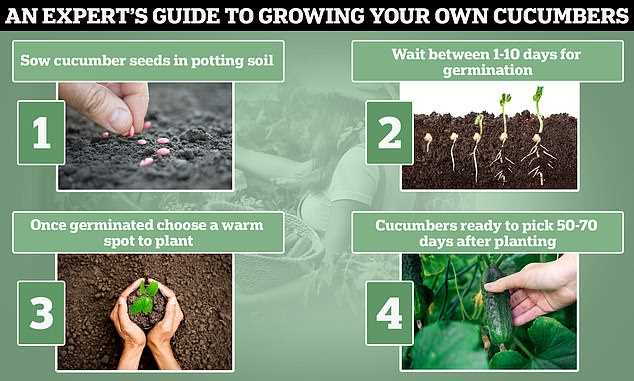
Once your cucumber seedlings have reached a height of about 3-4 inches and have developed a strong root system, it’s time to transplant them into the greenhouse. Transplanting seedlings is an important step in the cucumber growing process as it allows the plants to have more space to grow and thrive.
Step 1: Prepare the Greenhouse
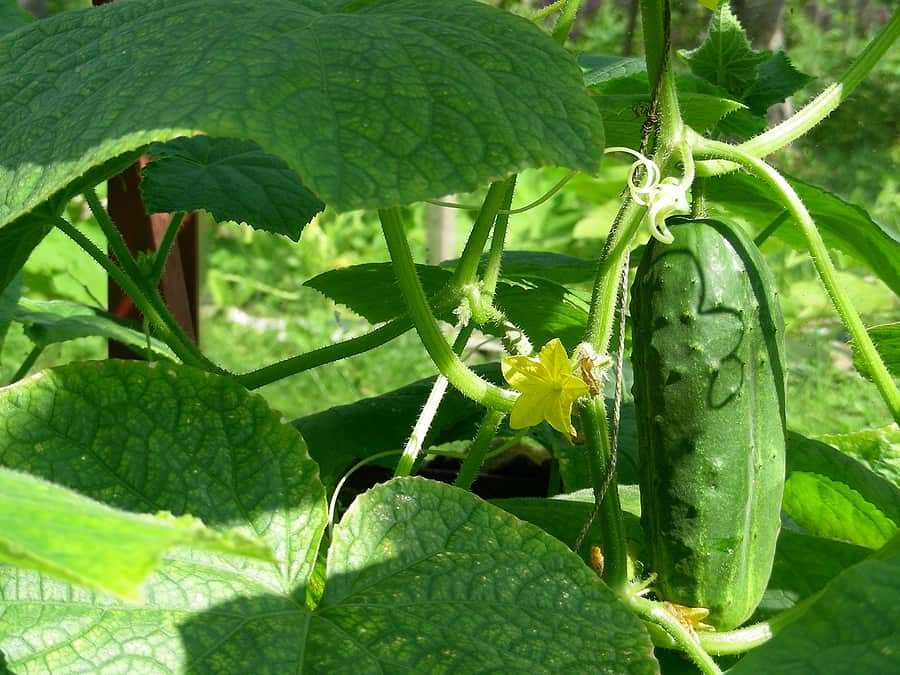
Before transplanting the seedlings, make sure your greenhouse is properly prepared. Clean the greenhouse thoroughly and sanitize any tools or equipment you will be using to minimize the risk of pests or diseases. Ensure that the temperature and humidity levels in the greenhouse are optimal for cucumber growth.
Step 2: Choose the Transplanting Method

There are two common methods for transplanting cucumber seedlings in a greenhouse: direct planting and using transplant pots.
- Direct planting: In this method, you will transplant the seedlings directly into the prepared greenhouse beds. This method is suitable if you have enough space and want to save time and effort.
- Transplant pots: If you have limited space or want more control over the growing conditions, you can use transplant pots. Fill small pots or containers with a well-draining potting mix, and transplant the seedlings into them. This allows you to control the soil moisture and easily move the pots if necessary.
Step 3: Transplant the Seedlings
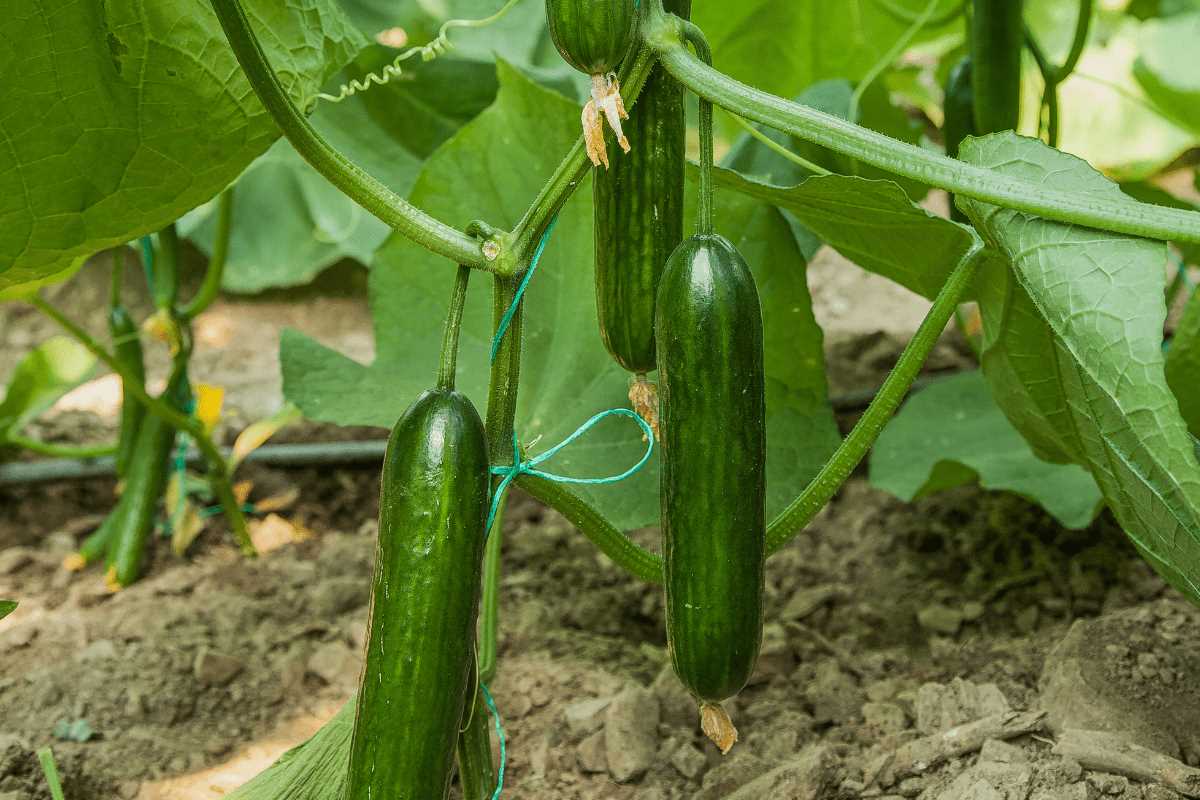
Regardless of the method you choose, follow these general steps to transplant your cucumber seedlings:
- Water the seedlings thoroughly a few hours before transplanting to help them withstand the shock of being moved.
- Gently remove the seedlings from their original containers, taking care not to damage their delicate roots.
- Dig holes in the greenhouse beds or pots, ensuring they are deep enough to accommodate the roots of the seedlings.
- Place each seedling in a hole and carefully fill in the surrounding soil, ensuring that the seedling is firmly but gently supported. Avoid compacting the soil too much, as this can hinder root growth.
- Water the transplanted seedlings thoroughly to settle the soil and help them establish in their new location.
Step 4: Provide Care and Maintenance
After transplanting the seedlings, continue to provide proper care and maintenance to ensure their healthy growth in the greenhouse. Monitor the temperature, humidity, and watering needs regularly. Provide support structures such as trellises or stakes to help the cucumber vines grow vertically. Regularly remove any weeds or pests that may hinder the cucumber plants’ growth.
By following these steps, you can successfully transplant cucumber seedlings into your greenhouse and ensure a bountiful cucumber harvest in the future!
“Question-Answer”
When is the best time to sow cucumber seeds in the greenhouse?
The best time to sow cucumber seeds in the greenhouse is in late winter or early spring, when the temperature inside the greenhouse is consistently above 70°F (21°C).
What type of soil should I use for growing cucumbers in the greenhouse?
Cucumbers prefer well-draining soil with a pH level between 6.0 and 7.0. You can use a mixture of garden soil, compost, and sand to create a suitable growing medium.
How often should I water the cucumber plants in the greenhouse?
Cucumber plants need regular watering, especially during hot weather. Aim to keep the soil evenly moist, but not waterlogged. Water them deeply once or twice a week, depending on the moisture levels in the soil.
Do cucumbers in the greenhouse need pollination?
Yes, cucumbers in the greenhouse require pollination to produce fruit. You can manually pollinate the flowers by gently brushing the inside of each flower with a small brush or by introducing pollinators, such as bees or bumblebees, into the greenhouse.
What should I do if my cucumber plants in the greenhouse are attacked by pests?
If your cucumber plants are attacked by pests, it is important to take action quickly to prevent further damage. You can try using organic pest control methods, such as insecticidal soap or neem oil, to get rid of the pests. Additionally, regularly inspecting your plants and removing any infested leaves or fruits can help prevent the spread of pests.
How long does it take for cucumbers to mature in the greenhouse?
The time it takes for cucumbers to mature in the greenhouse can vary depending on the variety and growing conditions. Generally, most cucumber varieties take around 50-70 days from sowing to harvest.
Can I grow cucumbers in containers inside the greenhouse?
Yes, you can grow cucumbers in containers inside the greenhouse. Just make sure the containers are large enough to accommodate the root system, and provide support for the vines to climb. Use a well-draining potting mix and water the plants regularly to keep the soil moist.







